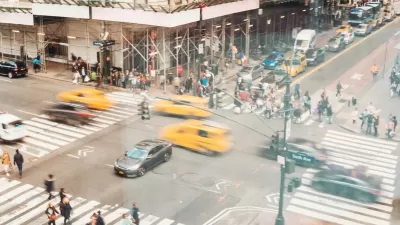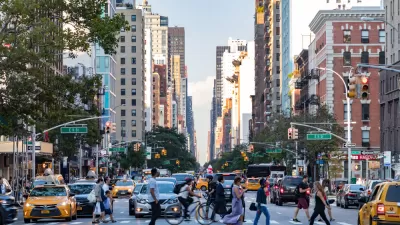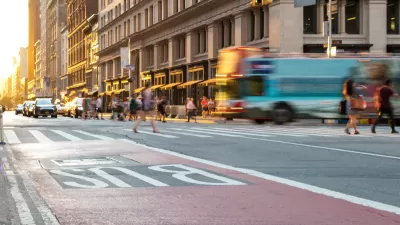The city may not have done enough to actually slow down driving in its nominal slow zones.

Paris, Iceland, and London are among the jurisdictions worldwide to adopt traffic-slowing strategies in the interest of safer streets—much of the time with success. But New York's slow zone program, launched in 2011, is a different story. Researcher Jonas Hagen found that weak implementation of the city's 28 slow zones have led to a failure to reduce traffic injuries.
New York's slow zones feature largely low-impact interventions, Hagen's report notes—like speed bumps, signs, and pavement markings. Other jurisdictions have seen success with more robust measures, as David Meyer writes for Streetsblog:
The London program, which included more physical street design changes, led to a measurable reduction in severe traffic collisions … London added raised crosswalks, raised intersections, curb extensions, pedestrian refuges, traffic diverters, mini-roundabouts, and other traffic-calming measures as part of its 20 mph zone program. And these interventions are installed at five times the rate per mile of street as New York’s speed humps.
FULL STORY: London’s Slow Zones Save Lives and New York’s Don’t. Here’s Why.

Planetizen Federal Action Tracker
A weekly monitor of how Trump’s orders and actions are impacting planners and planning in America.

San Francisco's School District Spent $105M To Build Affordable Housing for Teachers — And That's Just the Beginning
SFUSD joins a growing list of school districts using their land holdings to address housing affordability challenges faced by their own employees.

The Tiny, Adorable $7,000 Car Turning Japan Onto EVs
The single seat Mibot charges from a regular plug as quickly as an iPad, and is about half the price of an average EV.

Seattle's Plan for Adopting Driverless Cars
Equity, safety, accessibility and affordability are front of mind as the city prepares for robotaxis and other autonomous vehicles.

As Trump Phases Out FEMA, Is It Time to Flee the Floodplains?
With less federal funding available for disaster relief efforts, the need to relocate at-risk communities is more urgent than ever.

With Protected Lanes, 460% More People Commute by Bike
For those needing more ammo, more data proving what we already knew is here.
Urban Design for Planners 1: Software Tools
This six-course series explores essential urban design concepts using open source software and equips planners with the tools they need to participate fully in the urban design process.
Planning for Universal Design
Learn the tools for implementing Universal Design in planning regulations.
Smith Gee Studio
City of Charlotte
City of Camden Redevelopment Agency
City of Astoria
Transportation Research & Education Center (TREC) at Portland State University
US High Speed Rail Association
City of Camden Redevelopment Agency
Municipality of Princeton (NJ)





























